
Emilio Giuseppe "Nino" Farina was an Italian racing driver, who competed in Formula One from 1950 to 1956. Farina won the Formula One World Drivers' Championship in its inaugural 1950 season with Alfa Romeo, and won five Grands Prix across seven seasons.

Pierre Raymond Sommer was a French racing driver. He raced both before and after WWII with some success, particularly in endurance racing. He won the 24 Hours of Le Mans endurance race in both 1932 and 1933, and although he did not reach the finishing line in any subsequent appearance at the Le Mans, he did lead each event until 1938. Sommer was also competitive at the highest level in Grand Prix motor racing, but did not win a race. He won the French Grand Prix in 1936, but the event that year was run as a sports car race.
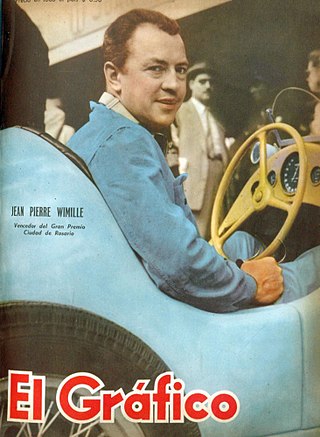
Jean-Pierre Wimille was a French racing driver and a member of the French Resistance during World War II. He was a two-time victor of the 24 Hours of Le Mans, winning in 1937 and 1939. He is generally regarded as one of the best French drivers of his era.

Maurice Bienvenu Jean Paul Trintignant was a French racing driver and winemaker, who competed in Formula One from 1950 to 1964. Trintignant won two Formula One Grands Prix across 15 seasons. In endurance racing, Trintignant won the 24 Hours of Le Mans in 1954 with Ferrari.
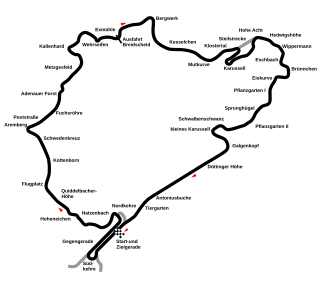
The 1952 German Grand Prix was a Formula Two race held on 3 August 1952 at the Nürburgring Nordschleife. It was race 6 of 8 in the 1952 World Championship of Drivers, in which each Grand Prix was run to Formula Two rules rather than the Formula One regulations normally used. The 18-lap race was won by Ferrari driver Alberto Ascari after he started from pole position. His teammates Giuseppe Farina and Rudi Fischer finished in second and third places.

The 1954 Belgian Grand Prix was a Formula One motor race held at Spa-Francorchamps on 20 June 1954. It was race 3 of 9 in the 1954 World Championship of Drivers. The 36-lap race was won by Maserati driver Juan Manuel Fangio after he started from pole position. Maurice Trintignant finished second for the Ferrari team with Fangio's teammate Stirling Moss in third.

The 1979 French Grand Prix was a Formula One motor race held on 1 July 1979 at Dijon-Prenois near Dijon, France.
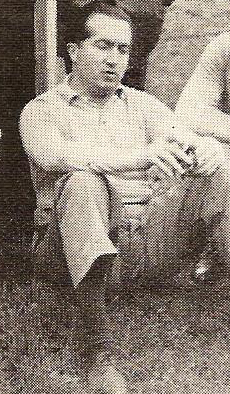
The 1952 Formula One season was the sixth season of FIA Formula One motor racing. It featured the 3rd World Championship of Drivers, which was contested over eight races between 18 May and 7 September 1952. The season also included several non-championship races and a separate East German Championship.

The 1951 Formula One season was the fifth season of FIA Formula One motor racing. It featured the second World Championship of Drivers, which was contested over eight races between 27 May and 28 October 1951. The season also included several non-championship races for Formula One cars.

The 1950 Formula One season was the fourth season of the FIA Formula One motor racing. It featured the inaugural FIA World Championship of Drivers, which was contested over seven races between 13 May and 3 September 1950. The only one outside of Europe was the Indianapolis 500, which was run to AAA National Championship regulations. No Formula One drivers competed in the Indy 500 or vice versa. Finally, the season also included several non-championship races for Formula One cars.

Jean-Pierre Maurice Georges Beltoise was a French racing driver and motorcycle road racer, who competed in Grand Prix motorcycle racing from 1962 to 1964, and Formula One from 1966 to 1974. Beltoise won the 1972 Monaco Grand Prix with BRM.

Umberto Maglioli was a racing driver from Italy. He participated in 10 Formula One World Championship Grands Prix, debuting on 13 September 1953. He achieved 2 podiums, and scored a total of 3 1⁄3 championship points. He participated in the Targa Florio race nineteen times, winning it three times, and the Mille Miglia ten times, with the best result being a second place in the Lancia Aurelia B20 GT in 1951.

Philippe Jean Armand Étancelin was a French racing driver, and a winner of the 1934 24 Hours of Le Mans. He competed primarily on the Grand Prix circuit, and was an early Formula One driver.

The 1936 Grand Prix season was the third year of the 750 kg Formula. The next iteration of the Mercedes-Benz did not prove successful and the team withdrew during the season to instead prepare for the next one. It therefore fell to the resurgent Auto Union team to dominate the racing. In particular, it was their young, new superstar, Bernd Rosemeyer, who mastered the tricky car and who showed superlative skill in wet conditions. Rosemeyer easily won this season's European Championship by winning three of the four Grands Prix.
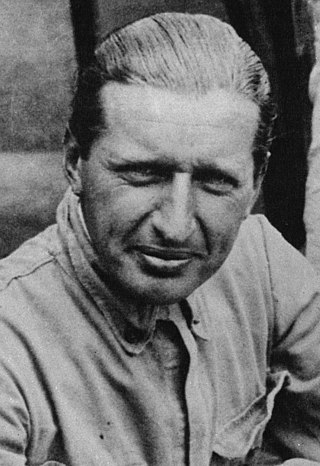
Count Carlo Felice Trossi di Pian Villar was an Italian racing driver and auto constructor.

The Alfa Romeo 158/159, also known as the Alfetta, is a Grand Prix racing car produced by Italian manufacturer Alfa Romeo. It is one of the most successful racing cars ever; the 158 and its derivative, the 159, took 47 wins from 54 Grands Prix entered. It was originally developed for the pre-World War II voiturette formula (1937) and has a 1.5-litre straight-8 supercharged engine. Following World War II, the car was eligible for the new Formula One introduced in 1947. In the hands of drivers such as Nino Farina, Juan Manuel Fangio and Luigi Fagioli, it dominated the first two seasons of the World Championship of Drivers.

The 1946 Turin Grand Prix was a Grand Prix motor race held on 1 September 1946 on a temporary street circuit at Valentino Park in Turin, Italy. It was the first time the event had been held since the end of the Second World War, as well as the first ever Formula One race, as the race regulations anticipated the official introduction of the new formula on 1 January 1947.
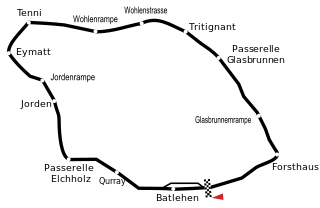
The 1947 Swiss Grand Prix was a Grand Prix motor race held at Bremgarten on 8 June 1947.

The 1947 Roussillon Grand Prix was a Grand Prix motor race held at Circuit des Platanes de Perpignan on 8 May 1947.

The 1946 Roussillon Grand Prix was a Grand Prix motor race held at Circuit des Platanes de Perpignan on 30 June 1946.



















